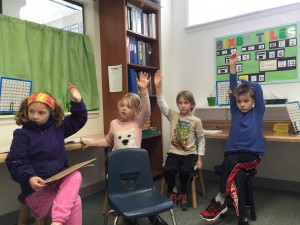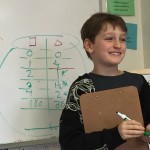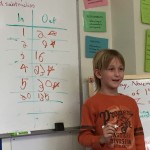
Students become fluent in many addition and subtraction combinations in first grade and usually add fluency in many more combinations in second grade. They work on this fluency through playing games, solving story problems, identifying combinations through a “quick image,” and sharing ideas on how to group numbers efficiently.

To provide students with the opportunity to become fluent in multiplication and division, third graders and some second graders have been focusing on the concepts, using modeling and adding to find the answer. Next, we will focus on groups of problems that students quickly realize that they already know (x2, x5, x10). Students will then build on these facts, deriving answers using reasoning and strategies based on known facts. Once students have focused on strategies for multiplying by a certain number, I will send homework home for third graders designed to move them to mastery of these combinations, which will involve practicing these combinations for 10 minutes a day four days a week. I will begin sending this homework home on Friday, December 4th.
Over the past few weeks, second and third grade students have continued to solve problems designed to apply and stretch their knowledge and conceptual understanding. Some of these problems have involved multiplying and dividing two digit numbers by one digit numbers. Many students applied the distributive property to make solving these problems more efficient. This week, students have been making rules for in/out charts, writing equations to express the rule, and applying the rule to complete an in/out chart. When we come back from Thanksgiving break, we will focus on division.
I wish all Bixby families a meaningful and fun holiday spent with family and friends. I look forward to seeing all my students back at Bixby refreshed from the break on November 30.





